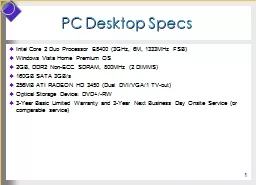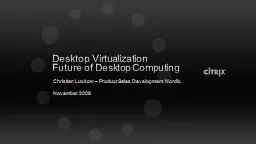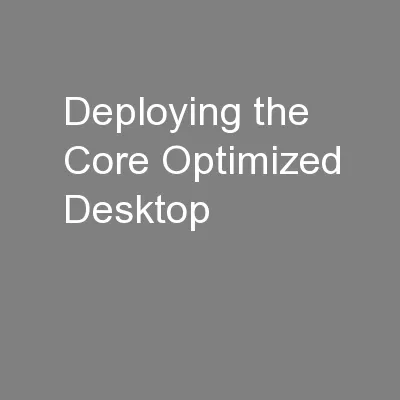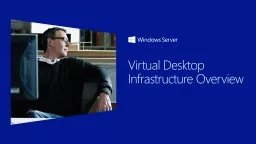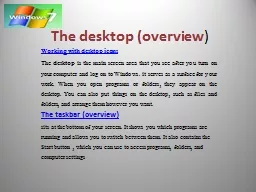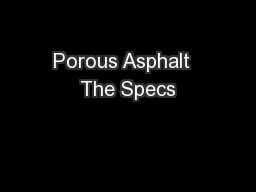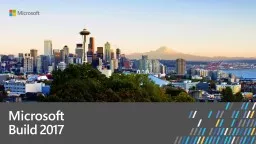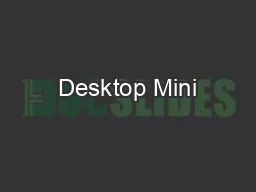PPT-PC Desktop Specs
Author : calandra-battersby | Published Date : 2015-10-12
Intel Core 2 Duo Processor E8400 3GHz 6M 1333MHz FSB Windows Vista Home Premium OS 2GB DDR2 NonECC SDRAM 800MHz 2 DIMMS 160GB SATA 3GBs 256MB ATI RADEON HD 3450
Presentation Embed Code
Download Presentation
Download Presentation The PPT/PDF document "PC Desktop Specs" is the property of its rightful owner. Permission is granted to download and print the materials on this website for personal, non-commercial use only, and to display it on your personal computer provided you do not modify the materials and that you retain all copyright notices contained in the materials. By downloading content from our website, you accept the terms of this agreement.
PC Desktop Specs: Transcript
Download Rules Of Document
"PC Desktop Specs"The content belongs to its owner. You may download and print it for personal use, without modification, and keep all copyright notices. By downloading, you agree to these terms.
Related Documents

